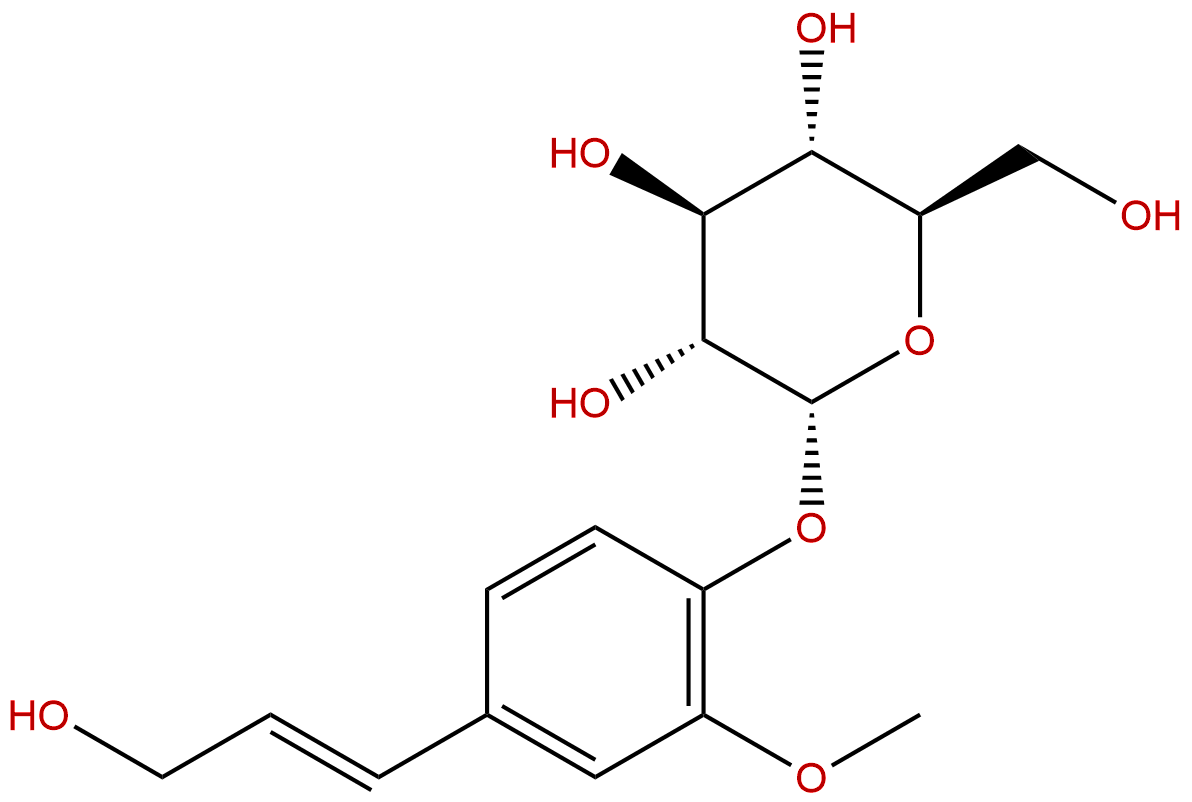
ConiferinCAS No.:531-29-3
|
||||||||||
 |
|
|
||||||||

| Catalogue No.: | BP3098 |
| Formula: | C16H22O8 |
| Mol Weight: | 342.344 |
Product name: Coniferin
Synonym name: Coniferoside; Abietin; Other Cas: 124151-33-3
Catalogue No.: BP3098
Cas No.: 531-29-3
Formula: C16H22O8
Mol Weight: 342.344
Botanical Source:
Physical Description: Off-white Powder
Type of Compound: Phenylpropanoids
Purity: 95%~99%
Analysis Method: HPLC-DAD or/and HPLC-ELSD
Identification Method: Mass, NMR
Packing: Brown vial or HDPE plastic bottle
The product could be supplied from milligrams to grams. Inquire for bulk scale.
We provide solution to improve the water-solubility of compounds, thereby facilitating the variety of activity tests and clinic uses.
For Reference Standard and R&D, Not for Human Use Directly.
Description:
Coniferin has ATP-dependent transport activity; the extracts of the Balanophora involucrate and trans-Coniferin have anti-oxidation effects; the chromogenic coniferin analog show the exclusive presence of beta-glucosidase activity in the differentiating xylem, similar to peroxidase activity.
References:
Plant Physiol. 1995 Feb;107(2):331-9.
A beta-glucosidase from lodgepole pine xylem specific for the lignin precursor coniferin.
Coniferin, the glucoside of the monolignol coniferyl alcohol, accumulates to high levels in gymnosperms during spring-cambial reactivation. A cinnamyl alcohol glucoside/beta-glucosidase system is thought to play a key role in lignification by releasing the monolignol aglycones. Investigation of such an enzyme system in the xylem of Pinus contorta var latifolia Engelm. revealed two major beta-glucosidases.
METHODS AND RESULTS:
One efficiently hydrolyzed the native substrate, Coniferin, and the other was more active against synthetic glucosides. The Coniferin beta-glucosidase was purified to apparent homogeneity using anion exchange, hydrophobic interaction, and size-exclusion chromatography. The apparent native molecular weight was estimated to be 60,000. A dominant 28-kD protein and a minor 24-kD protein were detected in the purified preparation following sodium dodecyl sulfate-polyacrylamide gel electrophoresis. Immunological evidence from polyclonal antibodies directed against the synthetic N-terminal peptide of the 24-kD protein suggested that the native protein is a dimer of 28-kD subunit size.
CONCLUSIONS:
The N-terminal sequence showed that Coniferin beta-glucosidase has high homology to known plant beta-glucosidases. Coniferin, syringin, and a synthetic Coniferin analog were preferred substrates for the Coniferin beta-glucosidase. In situ localization using the chromogenic Coniferin analog showed the exclusive presence of beta-glucosidase activity in the differentiating xylem, similar to peroxidase activity.
Journal of China Three Gorges University, 2009, 31(3):99-101.
Study of Anti-oxidation Effects of Extracts of Balanophora Involucrate and Trans-Coniferin.
METHODS AND RESULTS:
To study the anti-oxidation effect of extracts of Balanophora involucrate and trans-Coniferin,using the methods of DHHP to study the anti-oxidation effect of extracts of Balanophora involucrate and trans-Coniferin.When the concentration of the extracts of Balanophora involucrate is 3 mg/mL,the absorbency is the least;other concentrations can definitly eliminate the DPPH free radical.
CONCLUSIONS:
The conclusion is that both the extracts of the Balanophora involucrate and trans-Coniferin have anti-oxidation effects.